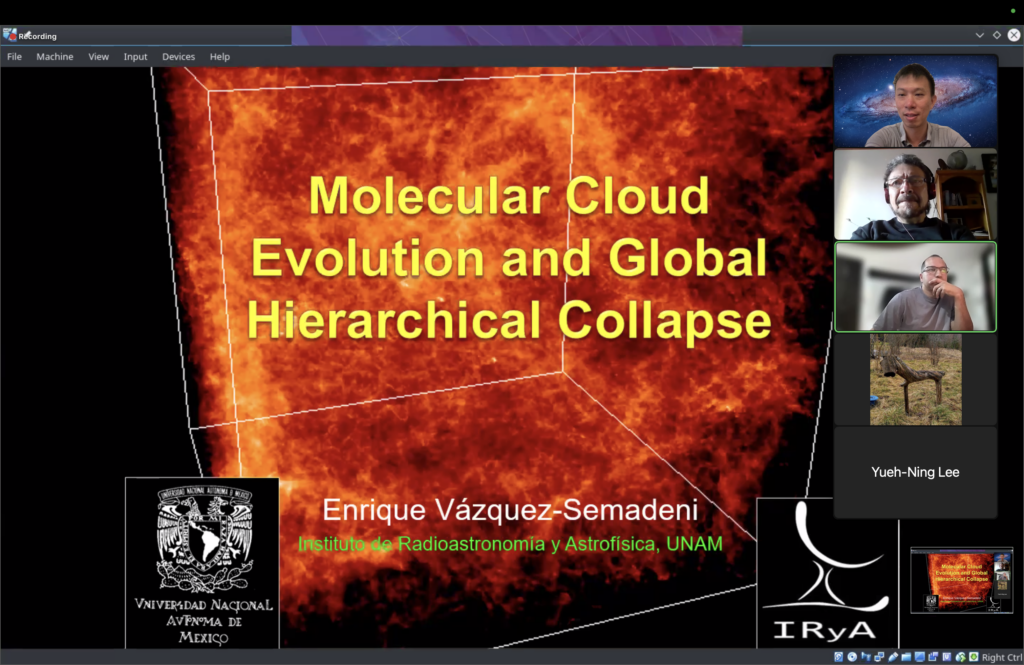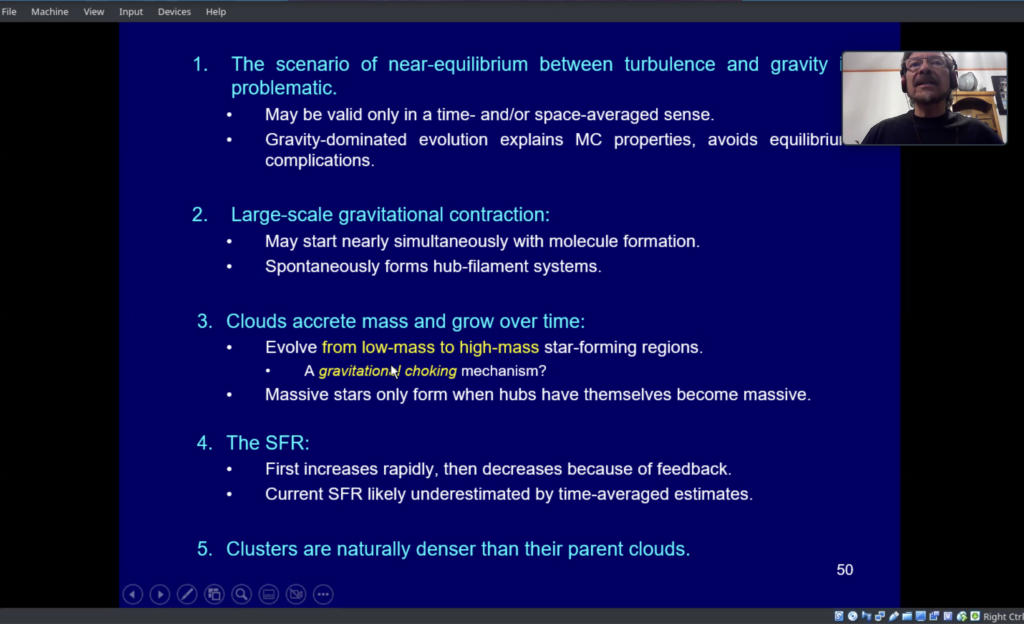Speaker: Prof. Enrique Cristián Vázquez-Semadeni (Instituto de Radioastronomía y Astrofísica (IRyA), UNAM)
Date & Time: Wednesday, May 1 at 08:30 (Taiwan) | Tuesday, April 30 at 18:30 (Mexico)
Title: Molecular Cloud Evolution and the Global Hierarchical Collapse Scenario
Abstract: Molecular clouds (MCs) are the sites of all present-day star formation in the Galaxy. For decades, they have been modeled as being in near-equilibrium between their self-gravity and turbulence. However, simulations of the entire life cycle of the clouds, from their assembly to their destruction by stellar feedback, suggest that, far from being in equilibrium, they are evolving continuously. In this talk, I will describe this evolutionary process, which involves the onset of a hierarchical, gravity-driven collapse flow that starts at the largest scales and propagates inwards into the clouds, forms hub-filament systems, and produces a spherically-averaged density profile near r^{-2}. The clouds’ star formation (SF) activity also evolves, first increasing rapidly and forming stars of progressively larger masses, and then decreasing again, due to the early feedback from these stars. The feedback ultimately stops the local SF episode, and perhaps initiates another episode at a neighboring location. The SF episodes are typically interrupted after only ~ 10% of the local gas mass reservoir has been converted to stars, maintaining the overall SFR low. The acceleration of the SF and the highly concentrated nature of the gas being “instantaneously” converted to stars cause the observationally measured “star formation efficiency per free-fall time” to remain small, ~ 1%, although the true total efficiency per SF episode is ~ 10 %. They also cause the mass density of young stellar associations to be systematically larger than that of the clouds in which they form.
ZOOM INFO:
Join Zoom Meeting
https://cuaieed-unam.zoom.us/j/89740007262
Meeting ID: 897 4000 7262
Talk link: https://youtu.be/wqcJEf8WktM


